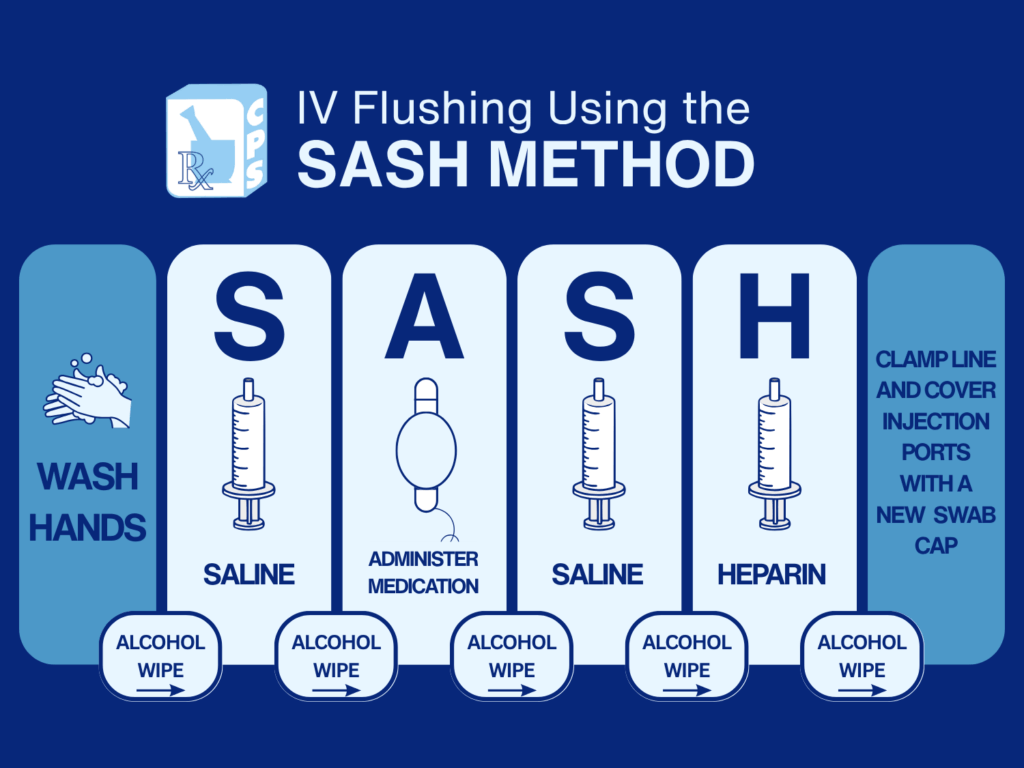This information describes your elastomeric pump (SMARTeZ® pump or Easypump®) and explains what to do during your infusion. It also tells you how to disconnect your pump after your infusion.
Your pump will be connected to your central venous catheter (CVC). There are 3 main types of CVCs: tunneled chest catheters, peripherally inserted central catheters (PICCs), and implanted ports. If you’re not sure which type of CVC you have, ask your healthcare provider.

About your Elastomeric Pump
Your pump is a small, lightweight device that will put the medication into your bloodstream at a steady rate and is designed to let you receive treatment comfortably at home.
Before You Begin
- Clean the tabletop with soap and water, alcohol or bleach wipes. Let it air dry.
- Wash your hands with soap and water for at least 20 seconds. Dry with a clean towel.
- Gather all supplies:
- Elastomeric infusion pump (Check for correct Drug name, dose, and discard date).
- 2 Syringes of Saline solution (0.9% Sodium Chloride – Clear)
- 1 syringe of Heparin solution (Yellow) (If prescribed)
- Alcohol wipes
- Disposable gloves
- Swab cap
- Sharps container for used syringes and needles
Inspecting the Pump
- Check for leaks, cracks, or cloudiness.
- Confirm the medication label and expiration date.
Preparing your medication
- Remove the pump from the refrigerator (if stored cold) about 30 minutes to 1 hour before use to allow it to reach room temperature.
- Do not heat the elastomeric ball in a microwave oven, direct sunlight, hot water, or any other heat source. Heating can damage the device or the drug.
- Ensure there are no air bubbles in the tubing.
- When connecting to a central line or port, clean the blue injection cap with an alcohol wipe for at least 15–30 seconds. Let it dry completely before connecting.
Flushing your IV line
- Take the cap off a syringe of saline solution. Twist the syringe into the end cap of your IV line.
- Unclamp your IV extension tubing (if applicable).
- Use a fresh alcohol pad to scrub the end cap on your IV line. Scrub for 15 seconds and let it air dry.
Connecting the Pump
- Twist the protective cap off the tubing that connects to the Elastomeric pump. Do not touch the open end of the tubing.
- Connect the tubing to your IV catheter or port using a twisting motion.
- Open the flow clamp (if present). Medication should start flowing slowly into your bloodstream.
During the Infusion
- Infusion begins within a few minutes. You might not feel it.
- Keep the pump at room temperature while infusing.
- Carry the pump in a pocket, shoulder bag, or belt pouch.
- Avoid squeezing or compressing the balloon.
- Monitor the site for redness, swelling, or discomfort.

After the Infusion
- When the balloon appears flat or deflated, the medication is fully infused.
- Clamp your IV line (if applicable) and close the clamp on the elastomeric pump.
- To remove the tubing from your IV line, hold the end cap and twist off the tubing. Always make sure the end cap stays attached to your IV line.
- Discard the used pump as instructed (usually in regular trash unless otherwise directed).
- Use a fresh alcohol pad to scrub the end cap on your IV line. Scrub for 15 seconds and let air dry.
- Twist a new syringe of Saline solution into the end of your IV line. “Flush” the line until the syringe is empty.
- If you do not use heparin: Before removing the empty syringe, close the clamp if you have one. Then hold the end cap and twist off the syringe. Go to step 9.
- If you were told to use heparin:
- Remove the empty saline syringe.
- Scrub the end cap on your IV line for 15 seconds with a fresh alcohol pad.
- Twist the syringe of heparin into the end you’re your IV line.
- Flush your IV line with 2-3mL of heparin.
- Before removing the empty syringe, close the clamp if you have one. Then hold the end cap and twist off.
- Throw your used supplies into the household trash unless we tell you not to.

Troubleshooting
- No flow?: Check for kinks in tubing, ensure all clamps are open, and that the pump is warm enough.
- Pain or swelling?: Stop the infusion and contact your nurse or pharmacist.
- Air bubbles?: Small ones are normal. If you see large bubbles or new ones forming, stop the infusion and call your provider.
- Infusion taking longer than expected? Make sure your solution is at room temperature before starting your infusion.
Tips for Success
- Track your start and end times.
- Keep the pump dry—do not submerge in water.
- Report any symptoms such as fever, chills, or allergic reactions.
- Always follow the instructions given by your nurse or pharmacist.

